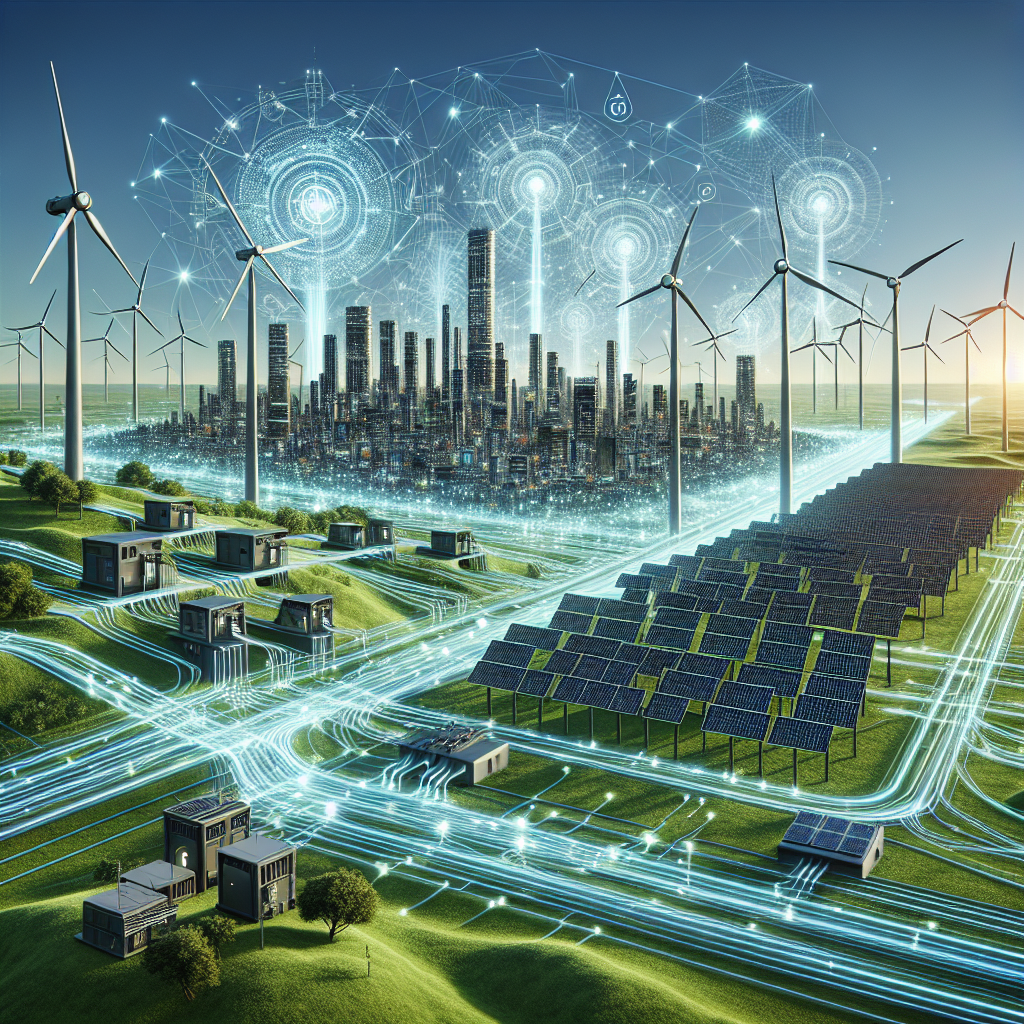The Role of AI in Smart Grids for Renewable Energy
In recent years, the advancement of artificial intelligence (AI) technology has revolutionized the way we generate, distribute, and consume energy. One of the most promising applications of AI in the energy sector is in the development of smart grids for renewable energy sources. Smart grids are modernized electricity networks that integrate renewable energy sources, energy storage systems, and advanced communication technologies to optimize energy production and consumption.
Renewable energy sources, such as solar, wind, and hydroelectric power, are becoming increasingly popular due to their environmental benefits and cost-effectiveness. However, one of the main challenges of integrating renewable energy sources into the traditional electricity grid is their intermittent nature. Solar panels only produce electricity when the sun is shining, and wind turbines only generate power when the wind is blowing. This variability in energy production can lead to imbalances in the grid and cause instability in the supply of electricity.
AI technologies, such as machine learning and predictive analytics, can help address these challenges by optimizing the operation of smart grids. By analyzing historical data on energy consumption, weather patterns, and renewable energy production, AI algorithms can predict future energy demand and supply with a high degree of accuracy. This enables grid operators to anticipate fluctuations in energy production and consumption and adjust the grid’s operation accordingly.
One of the key advantages of AI in smart grids is its ability to optimize the use of energy storage systems. Energy storage technologies, such as batteries and pumped hydro storage, play a crucial role in balancing supply and demand in the grid. AI algorithms can optimize the charging and discharging of energy storage systems based on real-time data on energy production and consumption. This helps maximize the utilization of renewable energy sources and reduce the reliance on fossil fuel power plants.
Another important application of AI in smart grids is the integration of demand response programs. Demand response programs incentivize consumers to reduce their electricity consumption during peak hours or when renewable energy production is low. AI algorithms can analyze data on consumer behavior and preferences to optimize the implementation of demand response programs. By incentivizing consumers to shift their energy consumption to off-peak hours, smart grids can reduce the overall demand for electricity and increase the penetration of renewable energy sources.
AI technologies can also improve the reliability and resilience of smart grids. By continuously monitoring and analyzing data from sensors and smart meters, AI algorithms can detect and diagnose potential issues in the grid in real-time. This enables grid operators to proactively address problems before they escalate and minimize the impact of outages on consumers.
In addition to optimizing energy production and consumption, AI can also improve the cybersecurity of smart grids. As smart grids become more interconnected and reliant on digital communication technologies, they become vulnerable to cyber attacks. AI-powered cybersecurity solutions can detect and respond to cyber threats in real-time, helping to safeguard the integrity and reliability of the grid.
Overall, AI technologies have the potential to transform the energy sector by enabling the widespread adoption of renewable energy sources and the development of more efficient and reliable smart grids. By leveraging the power of AI, grid operators can optimize energy production and consumption, improve grid reliability, and enhance cybersecurity.
FAQs:
Q: What is a smart grid?
A: A smart grid is a modernized electricity network that integrates renewable energy sources, energy storage systems, and advanced communication technologies to optimize energy production and consumption.
Q: How does AI help optimize smart grids for renewable energy?
A: AI technologies, such as machine learning and predictive analytics, can analyze data on energy consumption, weather patterns, and renewable energy production to predict future energy demand and supply. This enables grid operators to optimize the operation of smart grids and maximize the utilization of renewable energy sources.
Q: What are the benefits of AI in smart grids?
A: AI technologies can help optimize energy production and consumption, improve grid reliability, enhance cybersecurity, and increase the penetration of renewable energy sources in the electricity grid.
Q: How can AI improve the integration of renewable energy sources into the grid?
A: AI algorithms can optimize the use of energy storage systems, integrate demand response programs, and enhance grid resilience to enable the widespread adoption of renewable energy sources in the electricity grid.
Q: What are some challenges of integrating AI into smart grids?
A: Some challenges of integrating AI into smart grids include data privacy concerns, interoperability issues, and the need for skilled personnel to develop and maintain AI-powered solutions.

